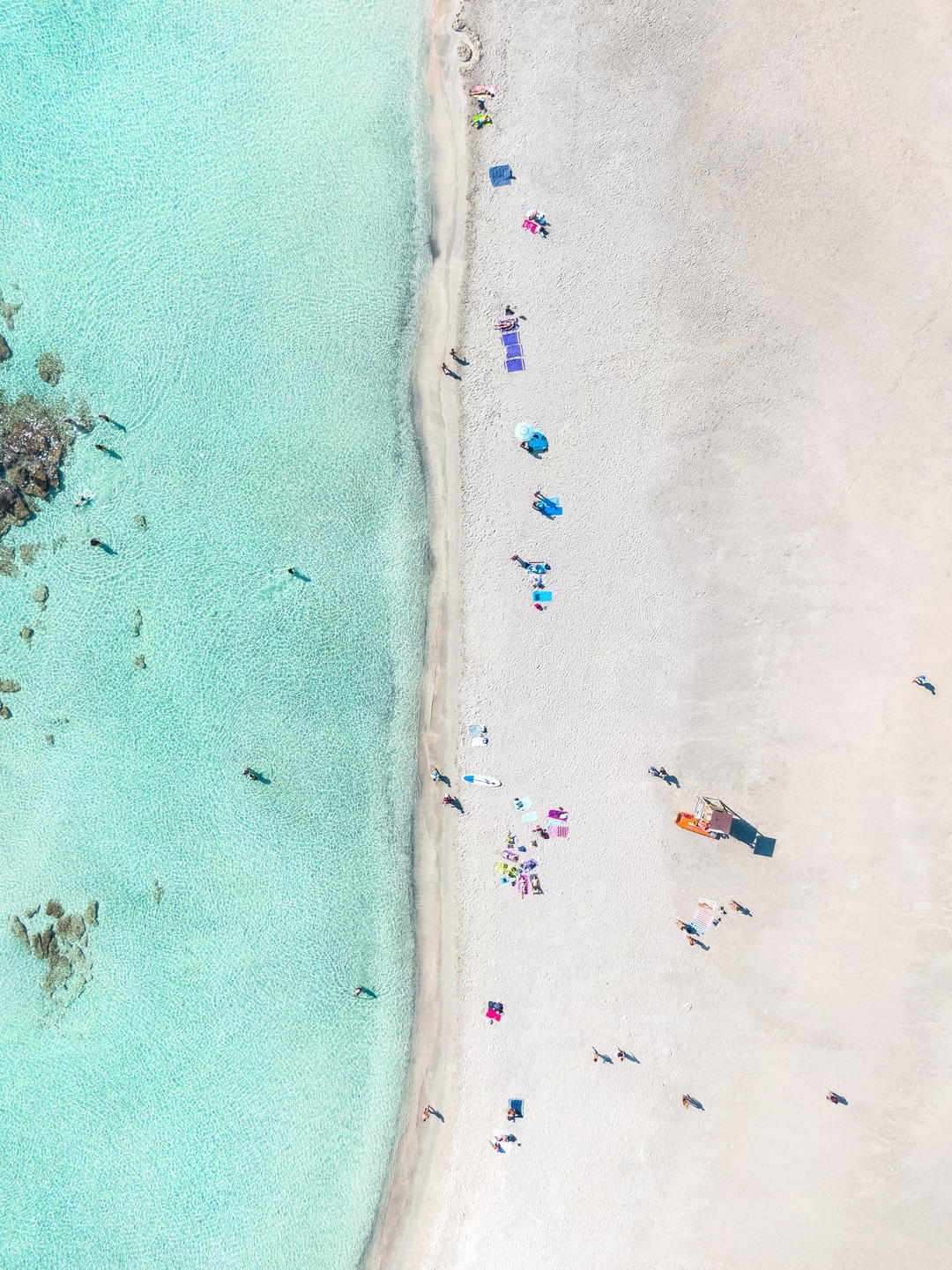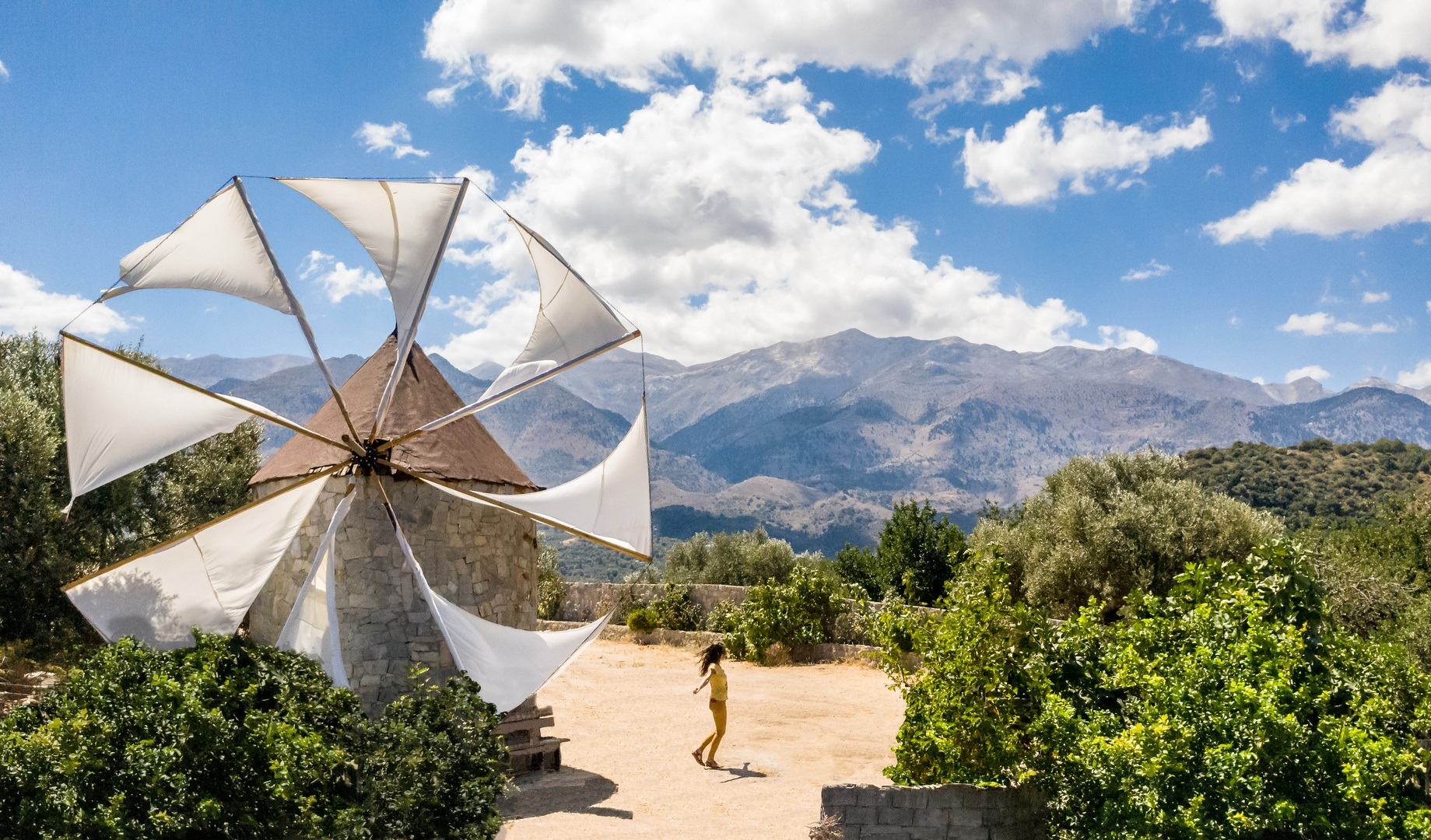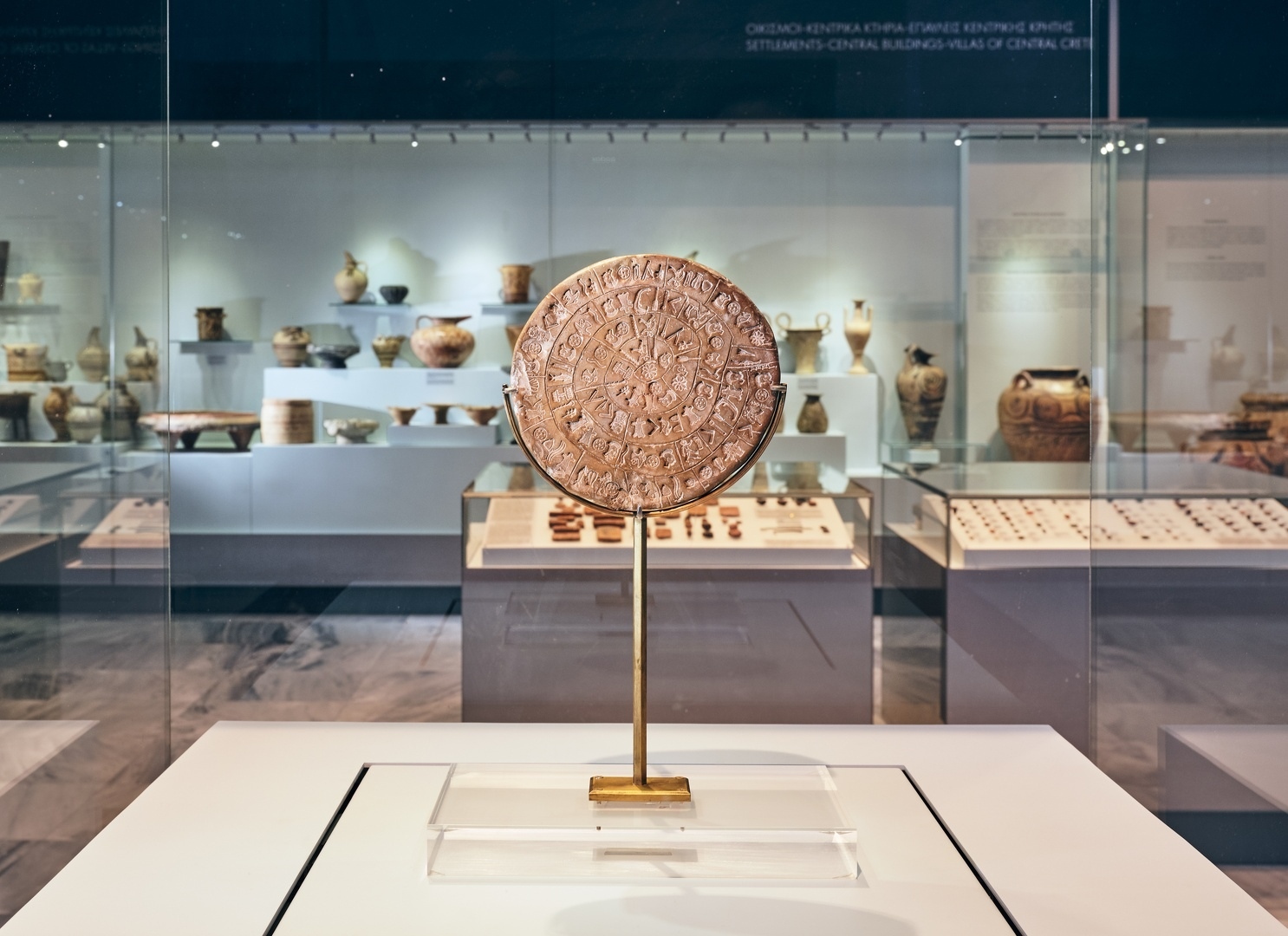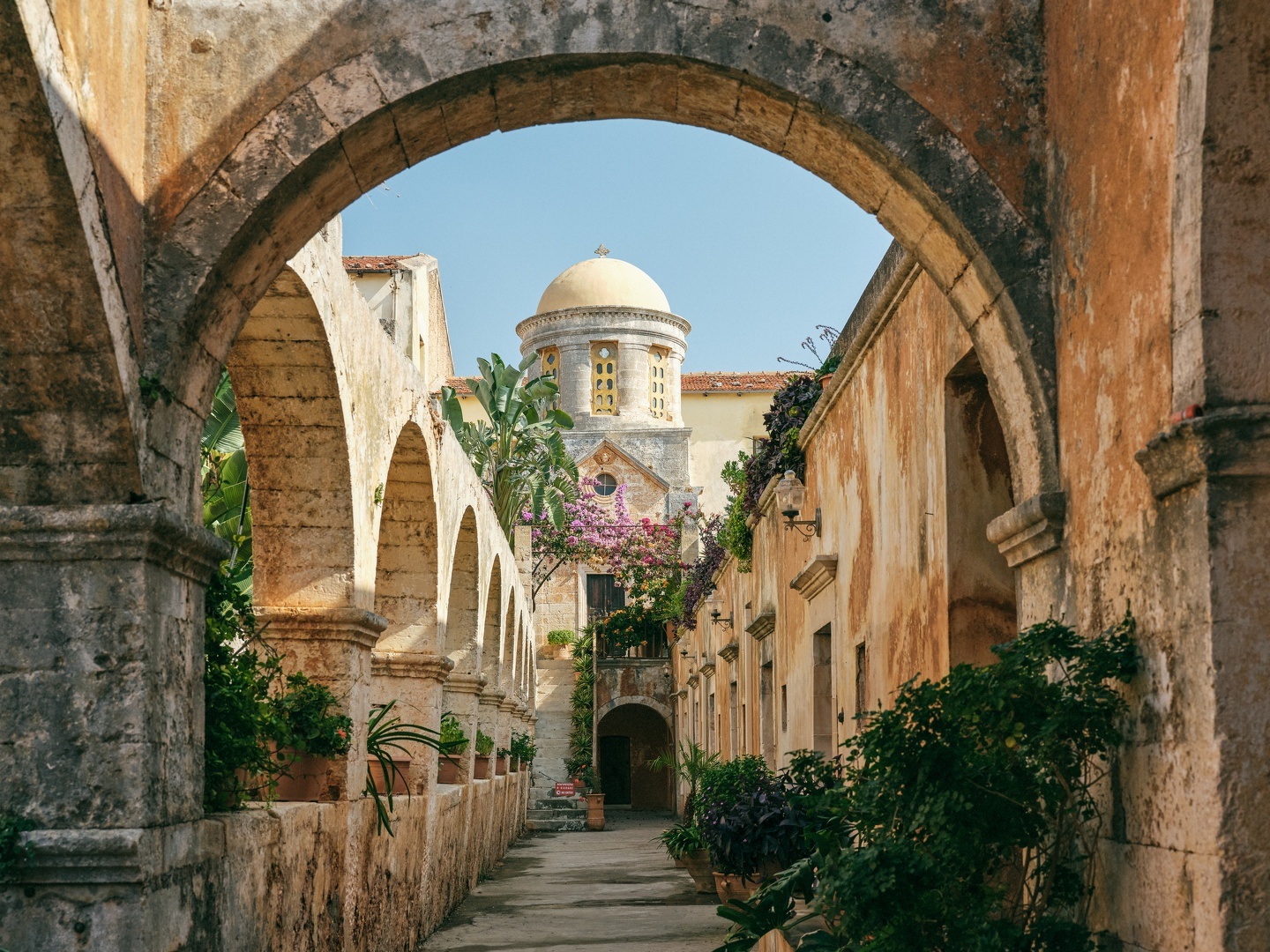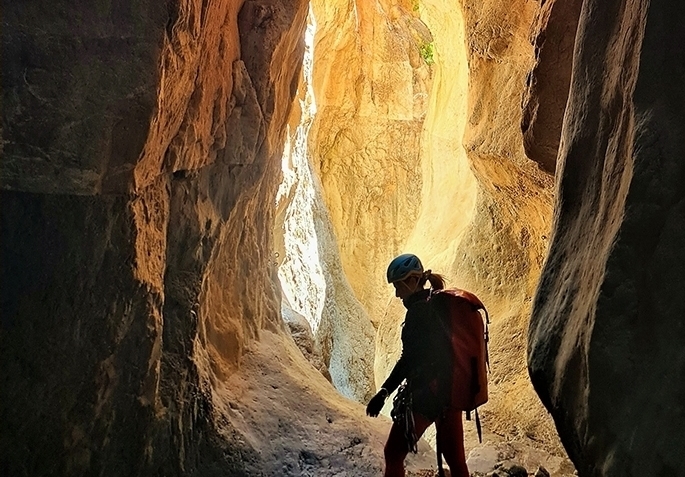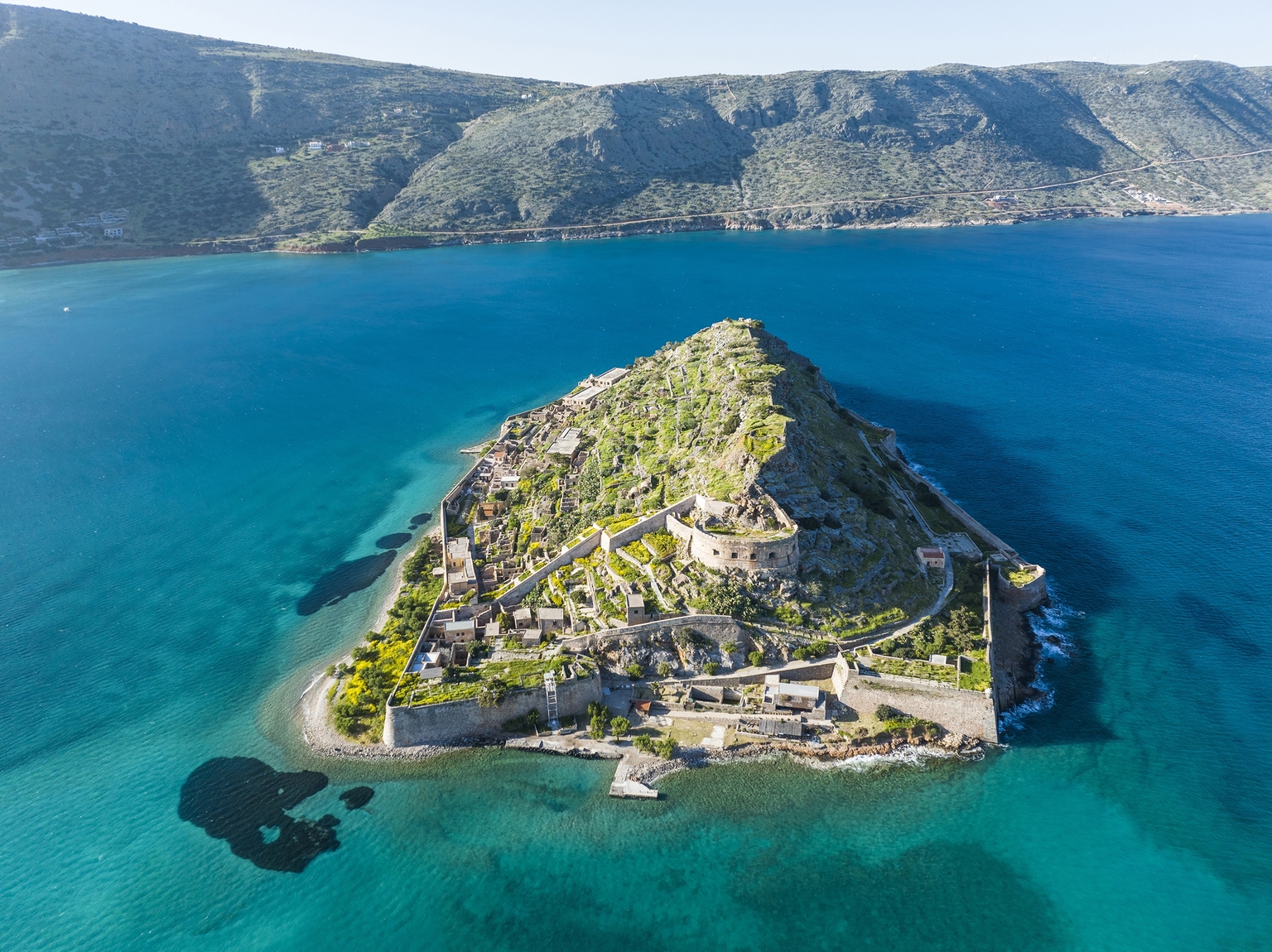Men's Costume
By Aristea Tzagaroulaki
The men's costume, known as the 'salvari' or breeches, remained consistent throughout Crete, albeit with slight variations from region to region. Typically fashioned in deep blue or black, these breeches were crafted from felt, loom cloth (cotton), or 'caramantolo'—a purchased fabric. Featuring wide-legged trousers that typically extended to the knees, these breeches were fastened at the waist with a cord.
Completing the ensemble, they donned a simple cotton shirt, often collarless, paired with a vest that could be worn either crisscrossed or left open.
They would wrap a long and wide woven belt around their waist, securing the knife to it.
The 'meitani’, featuring long sleeves, was worn over the vest and matched its colour and adornments. During winter, the attire was completed with a hooded cloak that extended to thigh-length, crafted from blue or black felt, lined with red felt, and adorned with intricate embroidery along the seams.
On his feet, the man wore the stivania, a type of boot typically black, but also occasionally reddish (earthy red), or even rarely yellowish, depending on the leather used.
Throughout the 19th century, they commonly wore the folding red fez with the tassel placed to the side. Additionally, they would also wear the ‘large scarf’, initially known as ‘petsa’ before adopting the Turkish name ‘sariki’. This scarf was used to wrap around the folding red fez. It's important to note that the modern knitted black silk sariki, with its dense fringes, which is now considered the traditional head cover of the Cretan people, emerged in the second quarter of the 20th century in central Crete.
Much later, following the First World War, the military 'guillota', crafted from thick beige fabric, replaced the breeches in traditional attire. The 'guillota' would be worn inside the boots and paired with the vest, belt, and sariki head covering.
Photos 1- 7: personal archive A Tsagaroulaki
Photo 8: Lyceum of Greek Women in Heraklion, Crete
